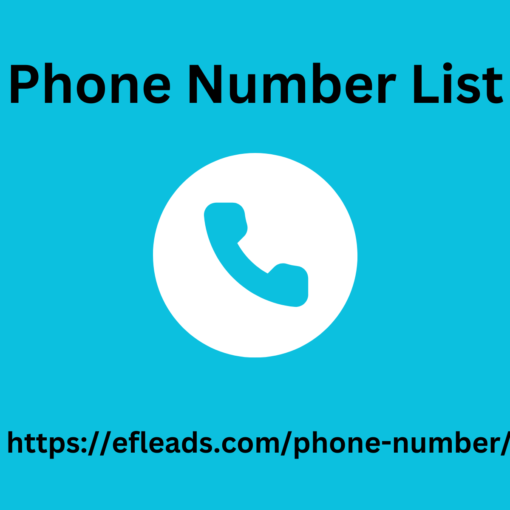Phone Number Material Leveraging Data Across Phone, Email, and WhatsApp for Better Insights
In today’s data-driven world, businesses have access to a wealth of information from various channels, including phone, email, and WhatsApp. By effectively leveraging data from these platforms, businesses can gain valuable insights into customer behavior, preferences, and needs.
1. Integrating Data Sources:
Centralized Platform: Use a customer relationship management (CRM) system or a dedicated data analytics platform to centralize data from phone, email, and WhatsApp.
API Integration: Connect your CRM or analytics platform to the APIs of these channels to automatically sync data.
2. Analyzing Phone Call Data:
Call Recordings: Analyze call recordings to identify common customer questions. Concerns, and pain points.
Call Duration: Track call duration to measure Phone Number Database customer satisfaction and identify areas for improvement in your sales or support processes.
Call Outcomes: Categorize calls based on their outcomes (e.g., sale, inquiry, complaint) to understand customer behavior.

3. Mining Email Data:
Open Rates: Track open rates to gauge email engagement and identify topics that resonate with your audience.
Click-Through Rates: Analyze click-through rates to determine which links and content are most appealing to your subscribers.
Unsubscribe Rates: Monitor unsubscribe rates to identify areas where you may be sending irrelevant or unwanted emails.
4. Leveraging WhatsApp Data:
Message Engagement: Track message delivery rates, open rates, and click-through rates to measure WhatsApp engagement.
Response Times: Analyze response times to assess customer satisfaction and identify areas for improvement in your customer support.
Group Activity: Monitor activity in WhatsApp groups to understand community dynamics and identify potential influencers.
5. Correlating Data Across Channels:
Customer Journey Mapping: Create a visual representation of the customer journey by connecting data points from phone, email, and WhatsApp.
Identify Patterns: Look for patterns and correlations between customer interactions across different channels.
Personalize Communication: Use insights from correlated data to personalize your communications and offer more relevant recommendations.
6. Using Predictive Analytics:
Predictive Modeling: Apply predictive analytics techniques to forecast future customer behavior based on historical data.
Identify Churn Risk: Identify customers at risk of churning based on their engagement levels across different channels.
Optimize Marketing Campaigns: Use predictive USA Lists analytics to target your marketing efforts to the most receptive customers.
7. Ensuring Data Privacy and Security:
Compliance: Adhere to data privacy regulations like GDPR and CCPA to protect customer data.
Data Security: Implement robust security measures to prevent unauthorized access to customer data.



